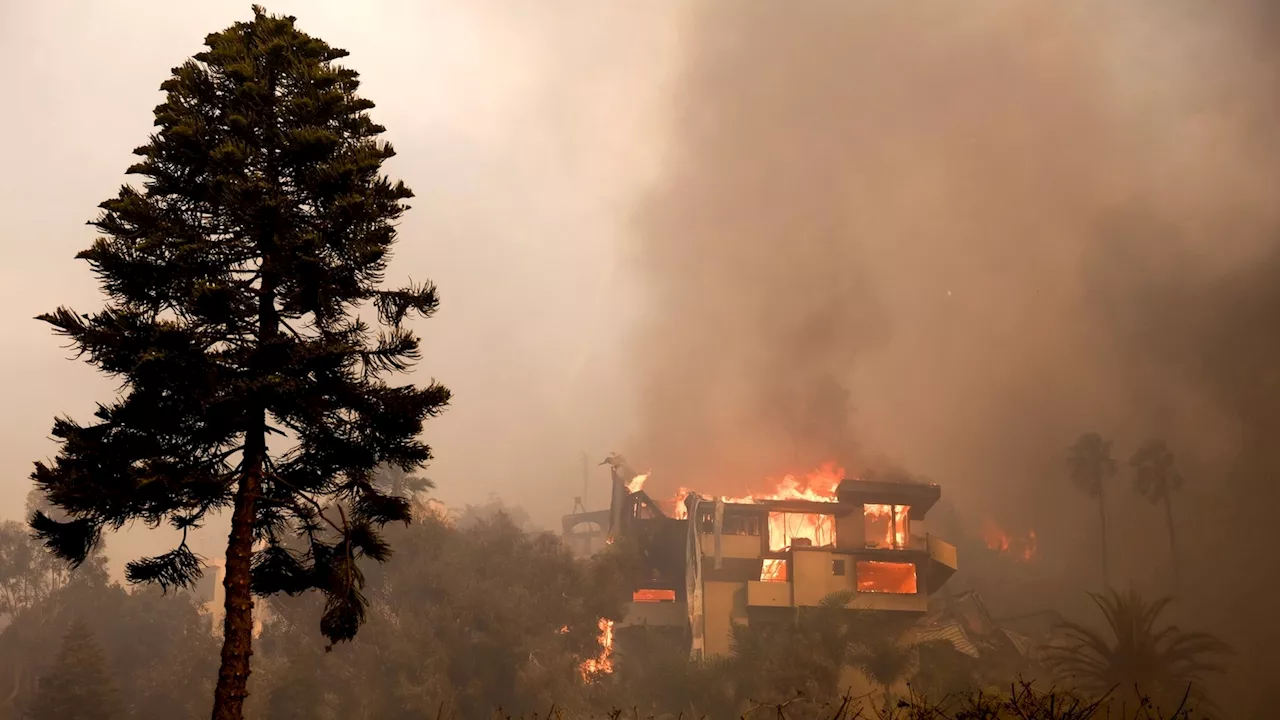A confluence of factors, including rapid shifts between wet and dry conditions and powerful winds, contributed to the severity of recent wildfires in Southern California. Experts say the region experienced two unusually wet winters followed by a prolonged dry spell, creating ideal conditions for fast-growing wildfires. Additionally, a powerful mountain wave wind event with gusts reaching 80 to 100 mph rapidly spread the flames, making the fires difficult to contain.
Hydroclimate whiplash, the rapid shift between wet and dry conditions, likely contributed to the severity of the wildfires burning in Southern California, according to experts. In recent years, parts of the state shifted from a major drought to an extended period of above-average precipitation that allowed for abundant vegetation growth. After that, a stretch of intense, record-breaking heat dried out much of that vegetation and provided ample fuel for large and fast-growing wildfires.
The Los Angeles region experienced two 'extraordinarily wet' winters -- in 2023 and 2024 -- followed by dry conditions that began in February, Edith de Guzman, a water equity and adaptation policy cooperative extension specialist at the University of California, Los Angeles, told ABC News. Since May 6, Los Angeles has only seen 0.16 inches of rain, so the region’s rainy season is off to an unusually dry start. 'Right now, we essentially have had no measurable precipitation since last spring, which has dried out all of that vegetation that grew happily over the last two wet winters,' De Guzman said. A firefighter battles the Palisades Fire while it burns homes at Pacific Coast Highway amid a powerful windstorm on Jan. 8, 2025 in Los Angeles, Calif. The shrub cover that popped up as a result of the extra precipitation later dried out -- providing large volumes of fuel for a fire, De Guzman said. Combined with the highly flammable materials many of the houses were constructed with, such as wood frames, it was a recipe for disaster, De Guzman said. In Southern California, dry conditions are also now more likely to last later into the fall, leaving the region more vulnerable during high wind events, according to Daniel Swain, a climate scientist with both UCLA and UC Agriculture and Natural Resources. 'Climate change is increasing the overlap between extremely dry vegetation conditions later in the season and the occurrence of these wind events,' Swain said. Among all of the states in the continental U.S., California has the most year-to-year variability between wet and dry conditions. 'As you move down into Southern California, that variability increases even more,' Julie Kalansky, climate scientist and deputy director of operations at the Center for Western Weather and Water Extremes at the University of California, San Diego's Scripps Institution of Oceanography, told ABC News. However, some climate experts point to growing evidence that shows climate change has increased the volatility between very dry and very wet conditions around the world, like moving from a devastating drought to record-breaking precipitation and then back to a drought. These rapid swings between extreme weather events will amplify many of the associated hazards and contribute to devastating wildfire events.'These hotter, dry conditions that are driven by climate change have created a tinderbox,' said Rachel Cleetus, policy director for the Climate and Energy Program at the Union of Concerned Scientists. 'We have this dried out vegetation, very dry landscapes.' A man walks his bike among the ruins left behind by the Palisades Fire in the Pacific Palisades neighborhood of Los Angeles, Jan. 8, 2025. But hydrovariability alone didn’t lead to the devastating fires over the past week. A 'confluence' of events allowed the fires to explode instantly, Cleetus said. It was the wind that spread the fires so rapidly once they were ignited. An exceptionally strong mountain wave wind event, with northerly 80 mph to 100 mph gusts, spread the fires faster than anyone could stop them. Cold, dense air associated with a low pressure system in the upper atmosphere was moving over Baja California. That air was positioned at a favorable north-northeast to northeast trajectory over the region allowing for the colder air located higher up in the atmosphere to come rushing down towards the surface and enhance the winds already blowing. This brought surges of powerful winds across the Los Angeles and Ventura County Mountains -- including in some places that don't typically see winds that strong, like Burbank and in the foothills of the Pacific Palisades. The wind direction and topography played a major role as well. The San Gabriel Mountains and the wind orientation interacted to produce a damaging wind event that doesn't occur often. The mountains can also make the winds more erratic because additional whirls of wind, known as wind eddies, can form as the air moves across the peaks and through the canyons. 'They were extremely strong and fast, but they were also erratic,' De Guzman said. 'They typically are narrower and a little bit more predictable in direction.
CALIFORNIA WILDFIRES HYDROCLIMATE WHIPLASH CLIMATE CHANGE WILDFIRE FUEL HIGH WINDS MOUNTAIN WAVE WINDS DRY CONDITIONS VEGETATION GROWTH
United States Latest News, United States Headlines
Similar News:You can also read news stories similar to this one that we have collected from other news sources.
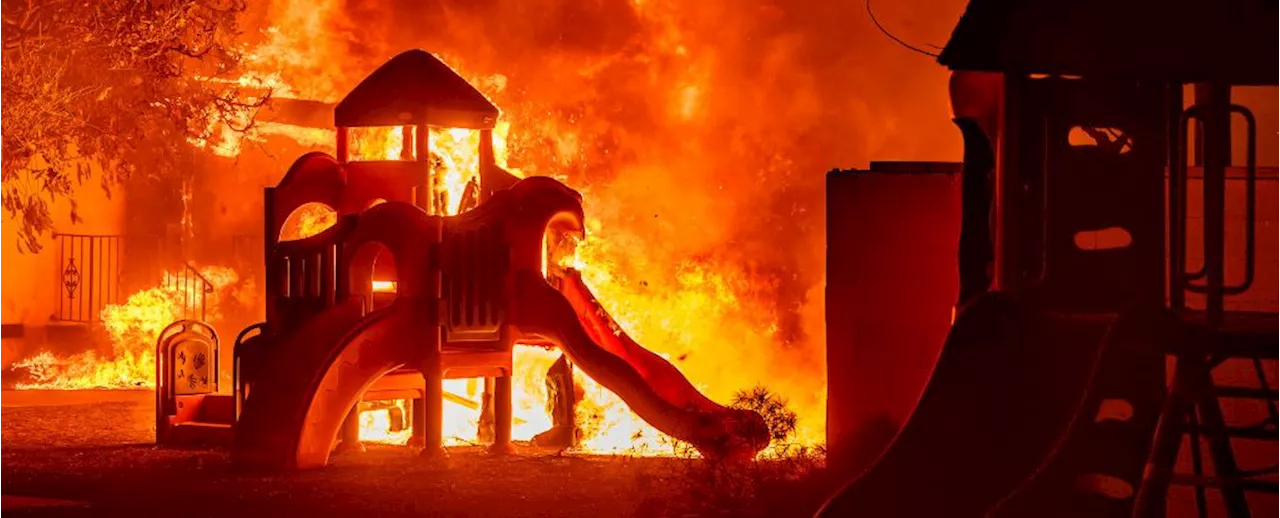 California Wildfires Highlight the Danger of 'Hydroclimate Whiplash'A new study reveals that extreme shifts between wet and dry conditions, known as 'hydroclimate whiplash', are becoming more frequent due to a warming atmosphere. This phenomenon is linked to intensified wildfires, as seen in the devastating California fires. Researchers warn that these swings in weather patterns will double in frequency as global temperatures rise, posing a significant threat to ecosystems and human lives.
California Wildfires Highlight the Danger of 'Hydroclimate Whiplash'A new study reveals that extreme shifts between wet and dry conditions, known as 'hydroclimate whiplash', are becoming more frequent due to a warming atmosphere. This phenomenon is linked to intensified wildfires, as seen in the devastating California fires. Researchers warn that these swings in weather patterns will double in frequency as global temperatures rise, posing a significant threat to ecosystems and human lives.
Read more »
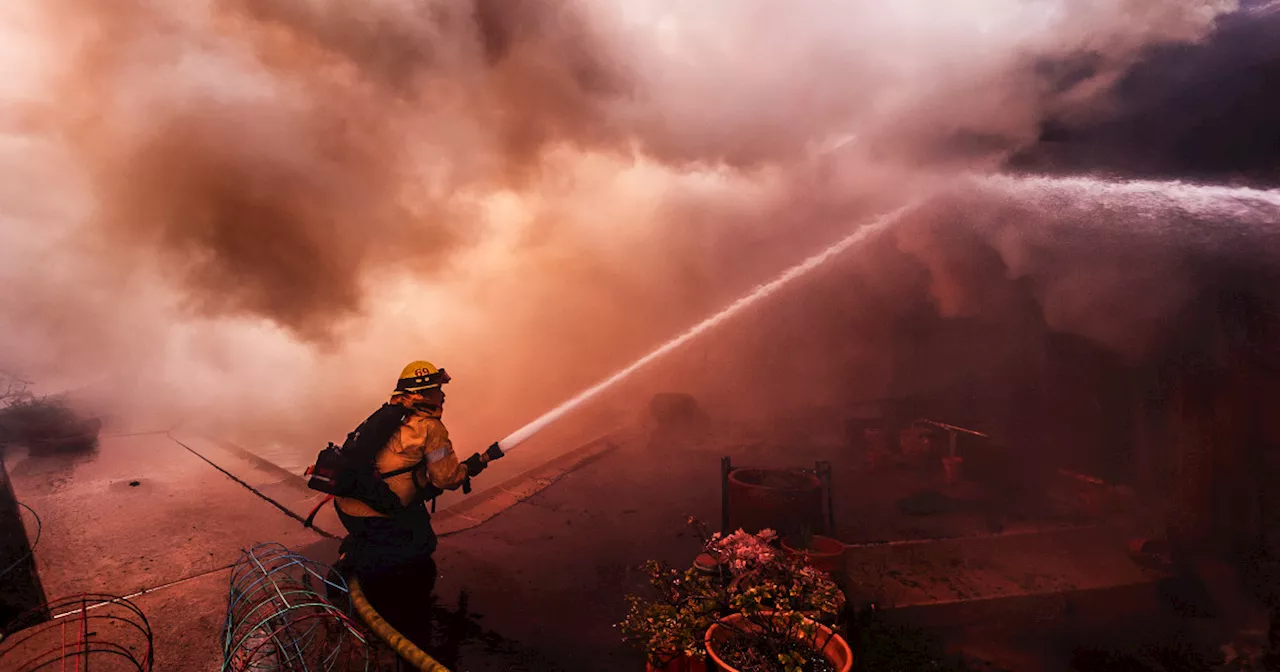 Wildfires Rage in Southern California Fueled by Powerful WindsTwo wildfires are burning in Southern California, fueled by powerful Santa Ana winds. The Palisades Fire has scorched over 1,200 acres, while the Close Fire near Eaton Canyon has grown to an estimated 20 acres.
Wildfires Rage in Southern California Fueled by Powerful WindsTwo wildfires are burning in Southern California, fueled by powerful Santa Ana winds. The Palisades Fire has scorched over 1,200 acres, while the Close Fire near Eaton Canyon has grown to an estimated 20 acres.
Read more »
 Wildfires Rage in Southern California Fueled by Strong WindsTwo wildfires, the Palisades Fire and the Close Fire, are burning in Southern California, fueled by strong Santa Ana winds. The Palisades Fire has charred over 1,200 acres, destroying structures but thankfully no lives have been lost. The Close Fire, near Eaton Canyon, has also grown rapidly, posing a threat to the surrounding area. High winds are expected to worsen the situation, making firefighting efforts challenging.
Wildfires Rage in Southern California Fueled by Strong WindsTwo wildfires, the Palisades Fire and the Close Fire, are burning in Southern California, fueled by strong Santa Ana winds. The Palisades Fire has charred over 1,200 acres, destroying structures but thankfully no lives have been lost. The Close Fire, near Eaton Canyon, has also grown rapidly, posing a threat to the surrounding area. High winds are expected to worsen the situation, making firefighting efforts challenging.
Read more »
 Wildfires Rage in California, Fueled by Strong WindsMultiple wildfires are burning across California, including a major blaze in the Pacific Palisades area near Los Angeles. The fires are being driven by strong winds, leading to rapid spread and prompting evacuations. President Biden has offered federal assistance, and firefighters are battling the blazes. The situation remains dangerous, with winds expected to worsen overnight.
Wildfires Rage in California, Fueled by Strong WindsMultiple wildfires are burning across California, including a major blaze in the Pacific Palisades area near Los Angeles. The fires are being driven by strong winds, leading to rapid spread and prompting evacuations. President Biden has offered federal assistance, and firefighters are battling the blazes. The situation remains dangerous, with winds expected to worsen overnight.
Read more »
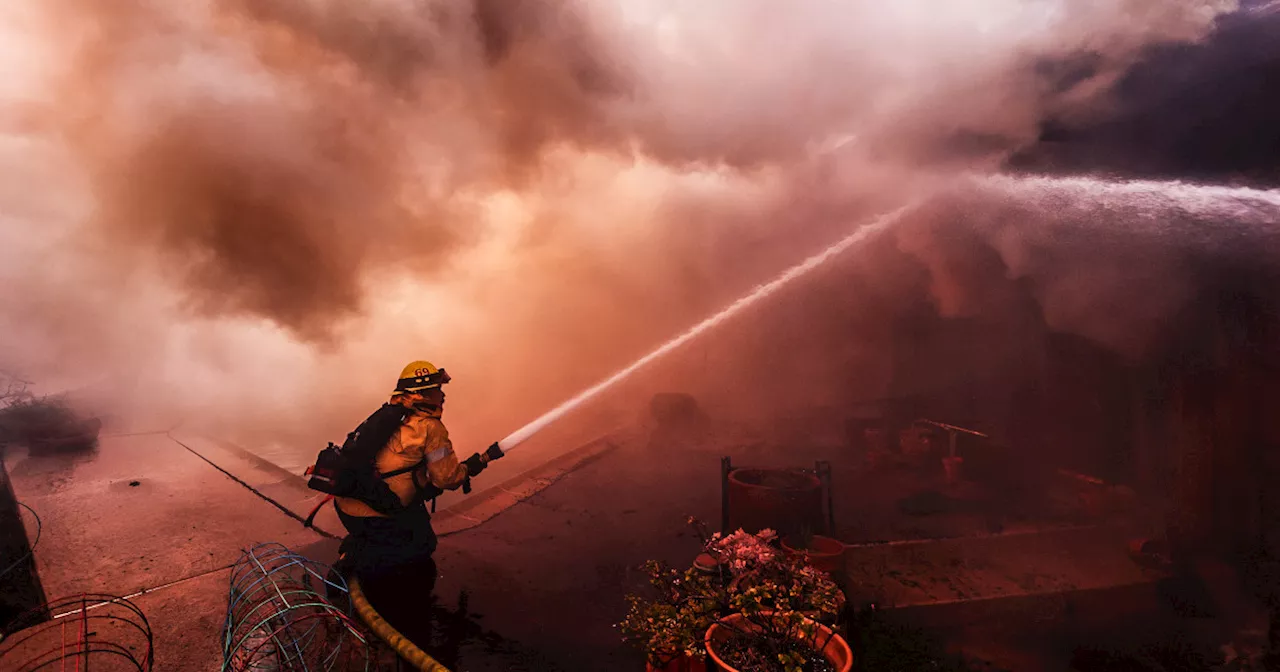 Multiple Wildfires Rage in Southern California Fueled by High WindsSeveral wildfires are burning in Southern California, fueled by strong winds and posing a significant threat to communities. The Palisades Fire in Los Angeles County has burned nearly 3,000 acres, prompting evacuations and drawing a federal response.
Multiple Wildfires Rage in Southern California Fueled by High WindsSeveral wildfires are burning in Southern California, fueled by strong winds and posing a significant threat to communities. The Palisades Fire in Los Angeles County has burned nearly 3,000 acres, prompting evacuations and drawing a federal response.
Read more »
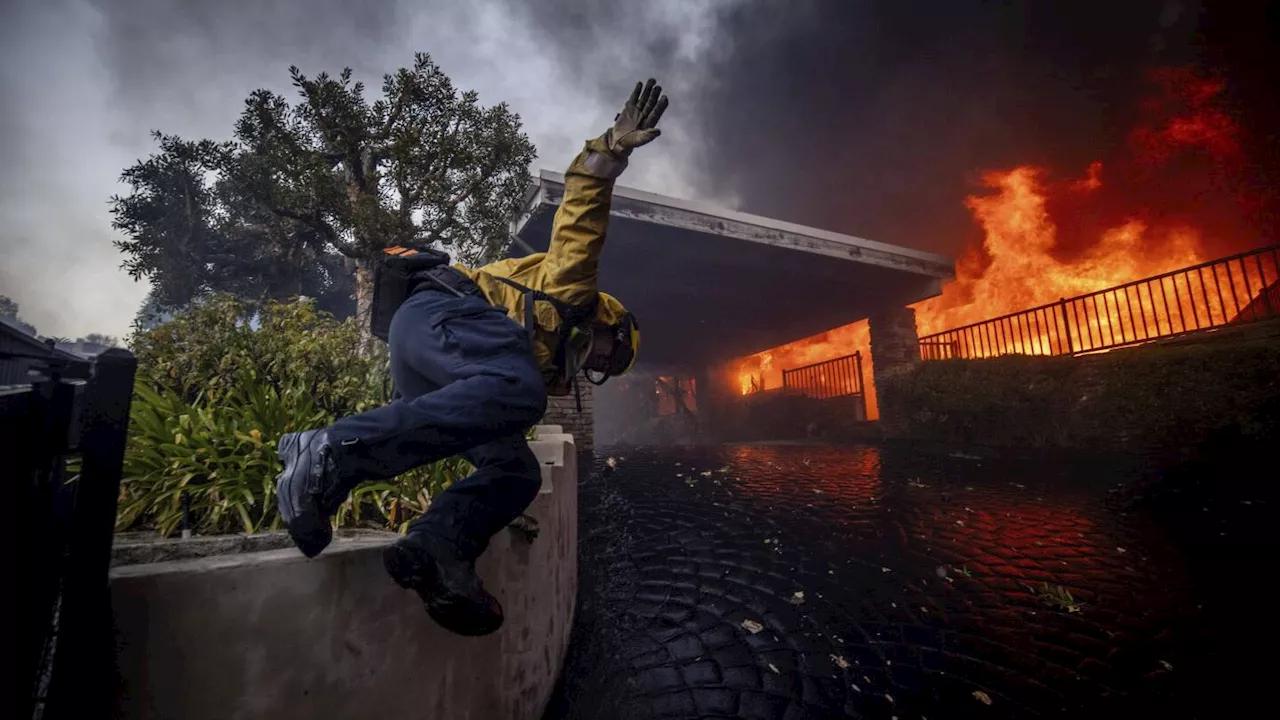 Wildfires Rage Across Southern California Fueled by Strong WindsA large brush fire is burning in Pacific Palisades, California as strong winds threaten to spread the flames. Firefighters are battling the blaze, and residents are sharing videos of the smoke and fire.
Wildfires Rage Across Southern California Fueled by Strong WindsA large brush fire is burning in Pacific Palisades, California as strong winds threaten to spread the flames. Firefighters are battling the blaze, and residents are sharing videos of the smoke and fire.
Read more »
